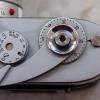Monitor Profiling in Mac OS X 10.7/Lion
-
Recently Browsing 0 members
- No registered users viewing this page.
-
Similar Content
-
- 29 replies
- 2,173 views
-
RNI profiles
By brickftl,
- 12 replies
- 371 views
-
- 2 replies
- 366 views
-
- 0 replies
- 136 views
-
- 10 replies
- 557 views
-





Recommended Posts
Join the conversation
You can post now and register later. If you have an account, sign in now to post with your account.
Note: Your post will require moderator approval before it will be visible.